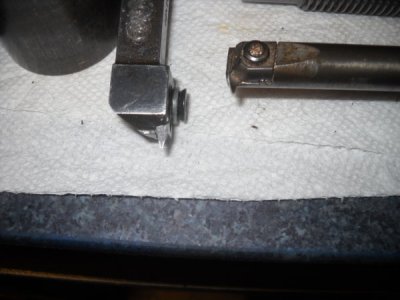So pardon my dumb questions, but I'm so impressed with this:
- when I hear people making the lead screw nut & having to buy an expensive reverse thread tap, did you alter the tool orientation & cutting direction on like a boring bar style tool?
- on the lead screw threading, when you said you went to either side a bit for a smaller progressive bite, does that mean the threading tool advances straight in, or the compound still has some angle?
- what type of insert holder/tool did you use for both ID & OD operations
- what do you recommend for an anti-backlash arrangement on the nut, do you have a pic of that


